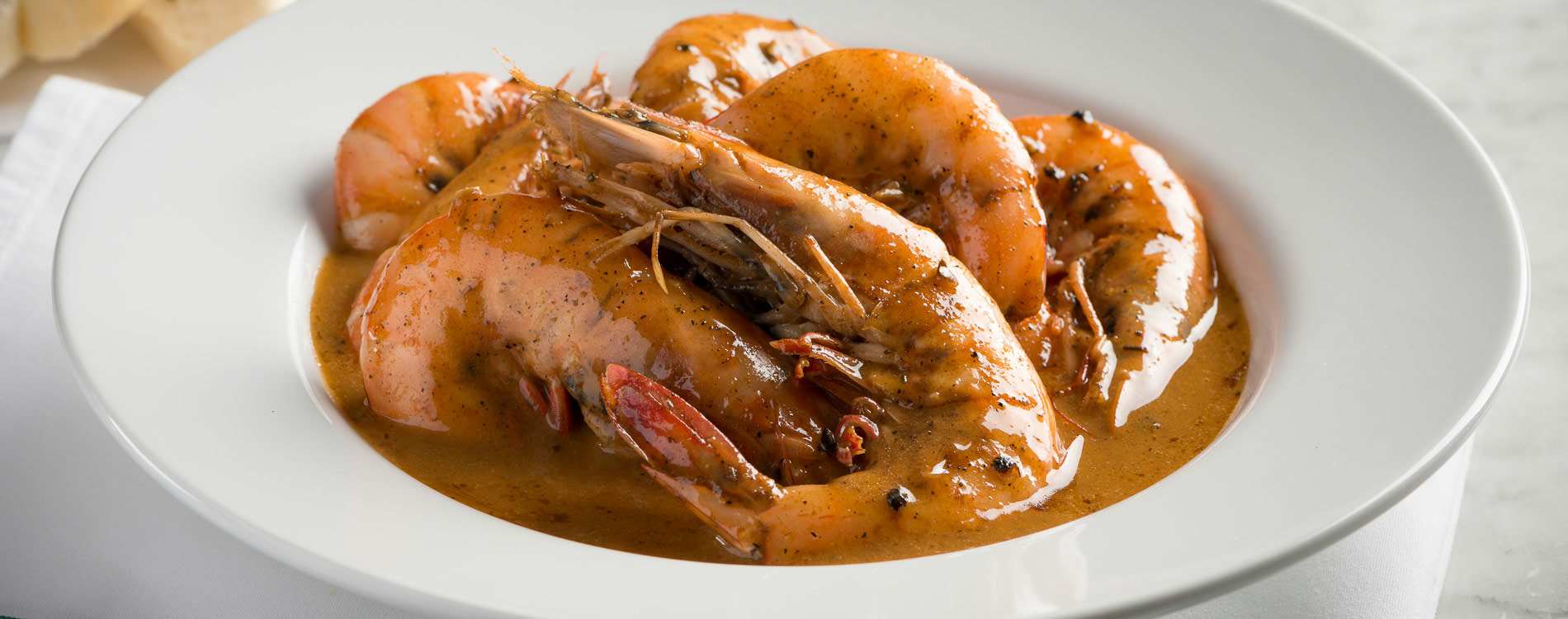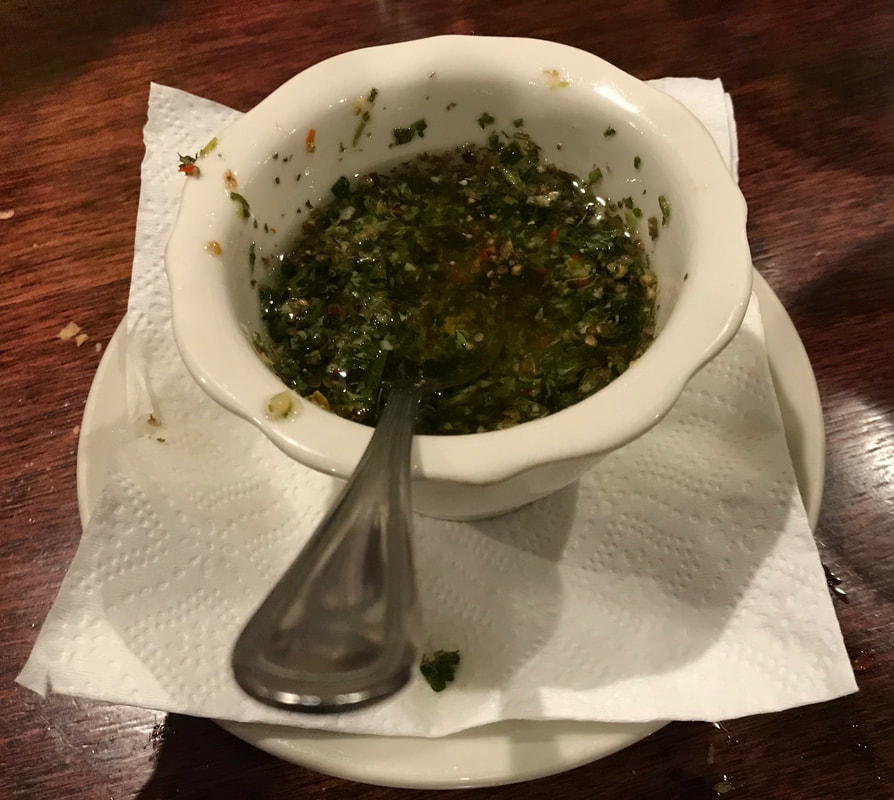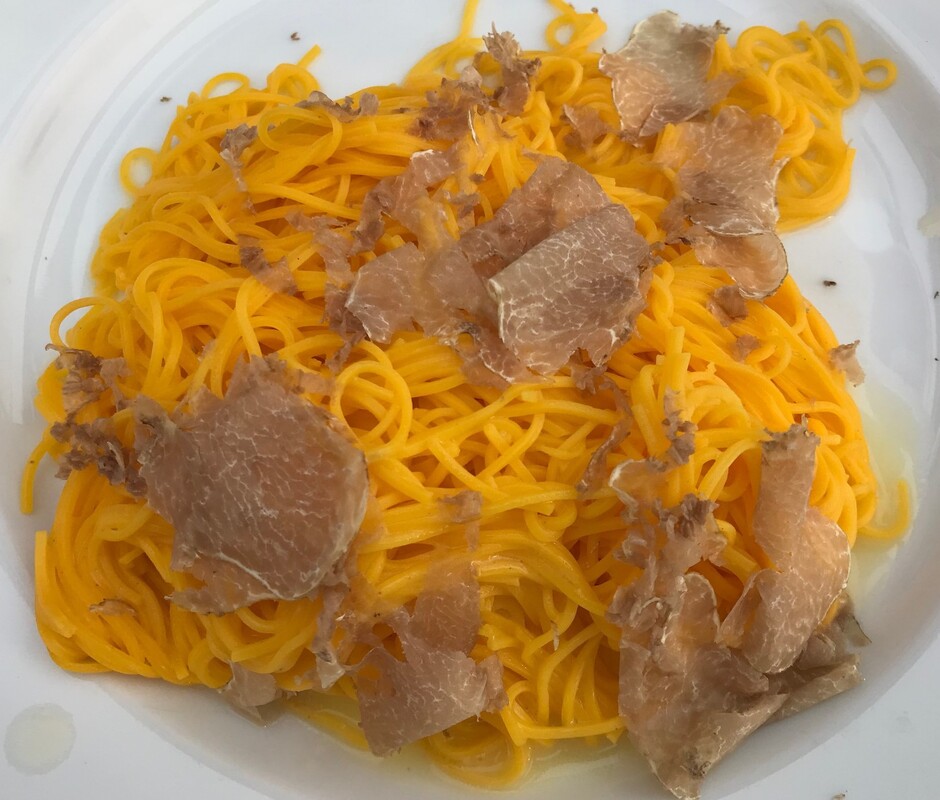I had it this past weekend at Mr. B’s Bistro, the long-standing Brennan family restaurant in the French Quarter that I had not visited in years. Though service was something less than prompt and professional, surprising at a Brennan restaurant, the barbecue shrimp were terrific, and terrifically messy. Thankfully, plastic bibs are provided, an unsightly necessity.
A few things about this garlickly and buttery preparation are unusual when remembering that it was devised at an Italian restaurant. Though delicious, it hardly registers as Italian or even Italian-American, to be honest. It is Creole. “Barbecue” is a complete misnomer. The shrimp are not barbecued, or even grilled. The shrimp are actually baked. Also, it takes its inspiration from Chicago. It was created at the restaurant in the 1950s after a customer raved about recently having the well-known Shrimps de Jonghe in Chicago. Yes, Chicago once had a renowned shrimp dish.
As flavorful as the dish is, it is also surprisingly easy, and great for parties, since most of the work is done beforehand. It can be a little, or a lot, messy, which can make it fun for informal get-togethers. The recipe below is from The Guide to Ridiculously Easy Entertaining. It comes from my co-author, Michael Wells, who is originally from New Orleans.
New Orleans-Style Barbecue Shrimp
Serves – 8 to 10
Ingredients:
Large shrimp (uncooked & heads-on) – 4 to 6 pounds
Butter – 3 sticks (24 tablespoons)
Olive Oil – ½ cup (4 ounces)
Garlic – 4 cloves, finely chopped
Bay Leaves – 2, crumbled
Lemon Juice – 4 tablespoons; use juice from freshly squeezed lemons
Worcestershire sauce – 2 tablespoons
Flat-Leaf Parley – 1 tablespoon, finely chopped
Oregano, dried – 2 teaspoons
Paprika – 2 teaspoons
Cayenne Pepper – 2 teaspoons
Louisiana-style Hot Sauce – 1 teaspoon
Black Pepper, freshly ground – 2 teaspoons
Chili Sauce – ½ cup (4 ounces)
Lemons – 2, thinly sliced
Cooking Steps:
- Melt the butter in a large saucepan over medium-low heat. When butter is melted stir in all of the contents, except for the shrimp. Simmer for 10 minutes.
- Place the shrimp in a large baking dish and then pour the butter mixture over it. Cover it with plastic wrap and then store in the refrigerator for at least 2 hours. The longer the better.
- Preheat the oven to 300°F (149°C).
- When nearly ready for your guests, put in the oven at 300°F (149°C) and cook for 20 to 30 minutes.
To Serve:
Serve with steamed rice and crusty French or Italian bread. For more casual settings, the bread alone will suffice.
A side of the delicious barbecue shrimp at Mr. B's Bistro in New Orleans





 RSS Feed
RSS Feed

